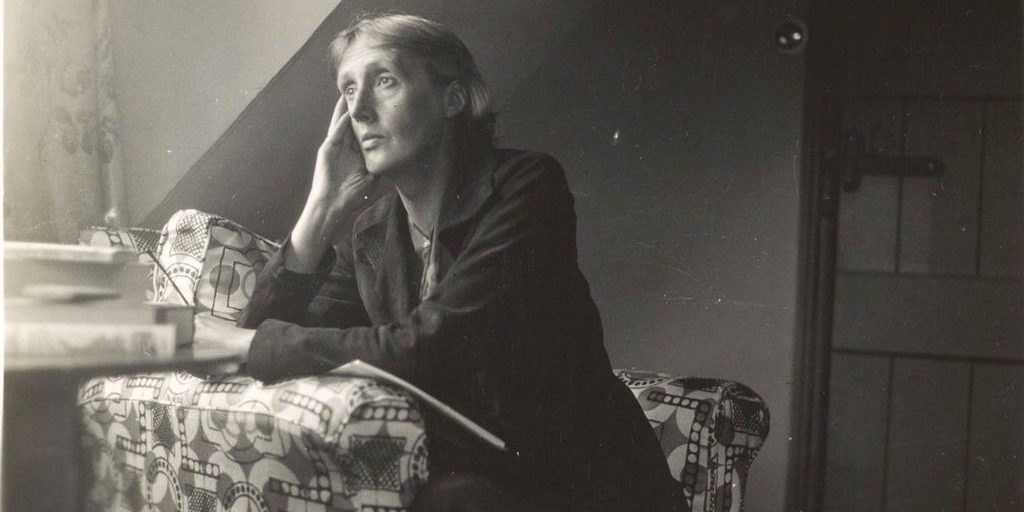Virginia Woolf (1882-1941) was an English novelist, essayist, biographer, and feminist. She was a prolific writer, whose modernist style changed with each new novel. Her letters and memoirs reveal glimpses of Virginia Woolf at the center of English literary culture during the Bloomsbury era. She represents a historical moment when art was integrated into society, as T.S. Eliot describes in his obituary for Virginia. “Without Virginia Woolf at the center of it, it would have remained formless or marginal … With the death of Virginia Woolf, a whole pattern of culture is broken.” Read here.
Sunday, 2 February 2025
Tuesday, 21 May 2024
VIRGINIA WOOLF - 5^C LINGUISTICO
Virginia Woolf was a well-known English writer in the 20th century. She was best-known for her novels, but she was also a writer of essays, biographies, letters, and diaries. Her writing fell into the Modernist Movement, which was a literary movement that took place between World War I and World War II.
https://www.iispandinipiazza.edu.it/wp/wp-content/uploads/2020/04/virginia-woolf.pdf
Saturday, 27 May 2023
VIRGINIA WOOLF
“When you consider things like the stars, our affairs don’t seem to matter very much, do they?”
Virginia Woolf is recognised as one of the most innovative writers of the 20th century. Perhaps best known as the author of Mrs Dalloway (1925) and To the Lighthouse (1927), she was also a prolific writer of essays, diaries, letters and biographies. Both in style and subject matter, her work captures the fast-changing world in which she was working.
Thursday, 19 May 2022
VIRGINIA WOOLF AND "MRS DALLOWAY"
Friday, 14 May 2021
VIRGINIA WOOLF'S MRS DALLOWAY
The Hours was the working title Virginia Woolf gave the novel that became Mrs. Dalloway. This novel chronicles the hours that make up one day in the life of Clarissa Dalloway, who prepares to host a party. Mrs. Dalloway inspired Michael Cunningham's novel, The Hours (1998). In both the earlier and later books, the title refers to the events and thoughts characters experience during the hours in an ordinary day. In a larger sense, the characters are preoccupied by mortality and suicide becomes the ultimate rejection of a meaningless or too-painful life.
The Hours is a 2002 psychological drama film directed by Stephen Daldry and starring Meryl Streep, Julianne Moore, and Nicole Kidman.
Tuesday, 15 September 2020
SHAKESPEARE'S SISTER
Virginia Woolf often questioned why men had always had
power, influence, wealth, and reputation, while women had nothing but children.
She believed that there would be female Shakespeare in the future only if women
found the first two keys to freedom: independent incomes (=money) and “rooms of their
own” (=privacy), a metaphor for women having access to their own private space. When A Room of One's Own was first published in 1929, it was considered
revolutionary. Most people considered
women less intelligent than men, they did not think about women's
freedom and certainly no one was writing about it, let alone as convincingly as
Virginia Woolf. Her essay became a classic in the movement toward equality.
Even today it is hardly dated, for the reason that there are still some men
(and women) who suppose that men are “the superior sex”.
If women were equal to men, people asked, why had none
of them produced great literature like Shakespeare's? Virginia Woolf
replied that this lack of achievement had nothing to with innate ability and
everything to do with women's lack of opportunity.
To illustrate
this, Virginia Woolf imagined a Judith Shakespeare,
William's sister, going to London to make her fortune as a playwright.
Unfortunately, she was regarded as a sex object, so rather than being taken
seriously as a writer, she was lied to and seduced, she became pregnant and
eventually committed suicide.
Wednesday, 19 June 2019
EXPLORING THE VIRGINIA WOOLF BLOG
Thursday, 28 March 2019
REMEMBERING VIRGINIA WOOLF

Sunday, 27 May 2018
VIRGINIA WOOLF - 5^C LINGUISTICO

Sunday, 30 April 2017
MY SUNDAY MOVIE - MRS DALLOWAY


Monday, 6 June 2016
A ROOM OF ONE'S OWN - 5^C LINGUISTICO
Friday, 20 May 2016
REVISING VIRGINIA WOOLF - 5^C LINGUISTICO
Wednesday, 20 May 2015
A ROOM OF ONE'S OWN
Tuesday, 19 May 2015
REVISING VIRGINIA WOOLF
Sunday, 25 January 2015
HAPPY BIRTHDAY, VIRGINIA WOOLF!
Wednesday, 20 August 2014
DISCOVERING VIRGINIA WOOLF'S LONDON
Sunday, 26 May 2013
SHE LOVED LIFE, LONDON, THIS MOMENT OF JUNE













